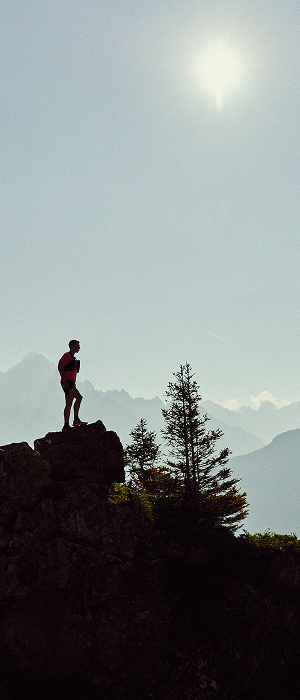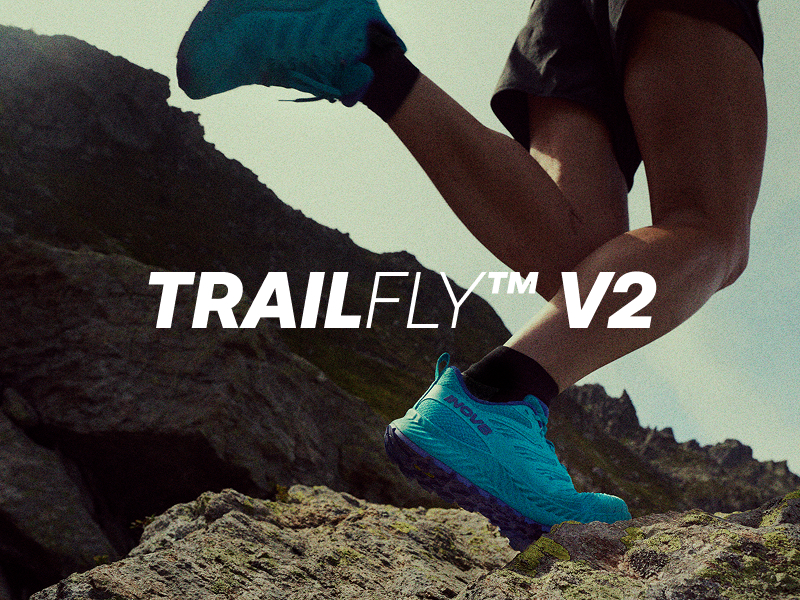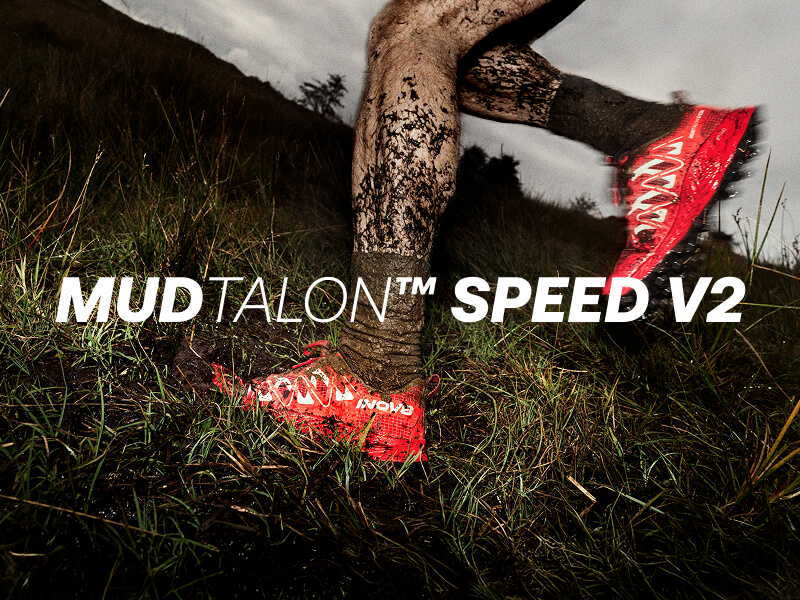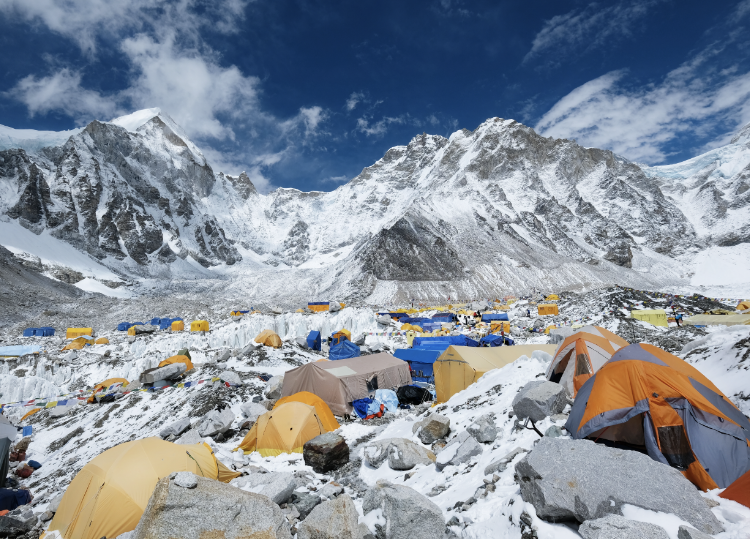
Everest Base Camp (EBC) refers to one of two camps located on opposite sides of Mount Everest, the world’s highest mountain (8,848 metres).
These two camps (South and North) serve as the starting points for climbers attempting to summit Everest, as a popular trekking destination for adventurers and, in the case of the South camp, the start line for the annual Everest Marathon.
The South camp sits at 5,364 metres above sea level in the Khumbu region of Nepal. Every May – to celebrate the day of the historic first ascent of Everest by Tenzing Norgay Sherpa and Sir Edmund Hillary in 1953 – the Everest Marathon begins from this point.
Runners from 20+ nations tackle a largely downhill route from Base Camp, along rough tracks and trails. The record time is 3:28:27, which is testament to the difficulty of the course and the challenges posed by running at high altitude.
Think you’ve got what it takes to run the Everest Marathon? Win a place on the 2026 start line as part of a 19-day adventure trip to Nepal in our challenge giveaway with partners KE Adventure.
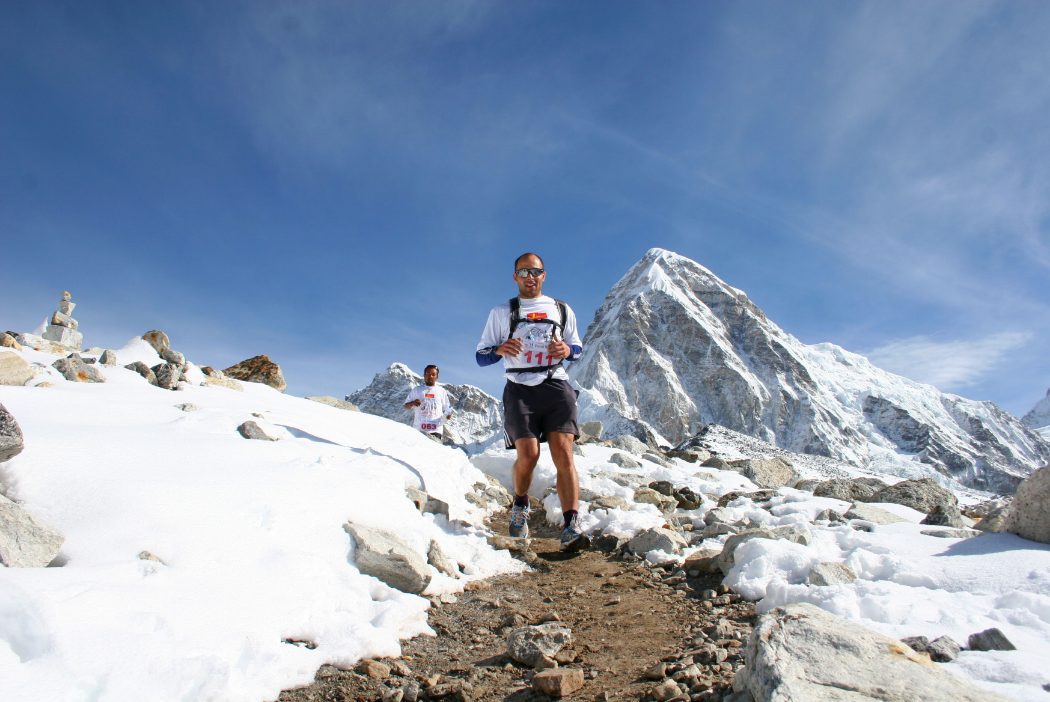
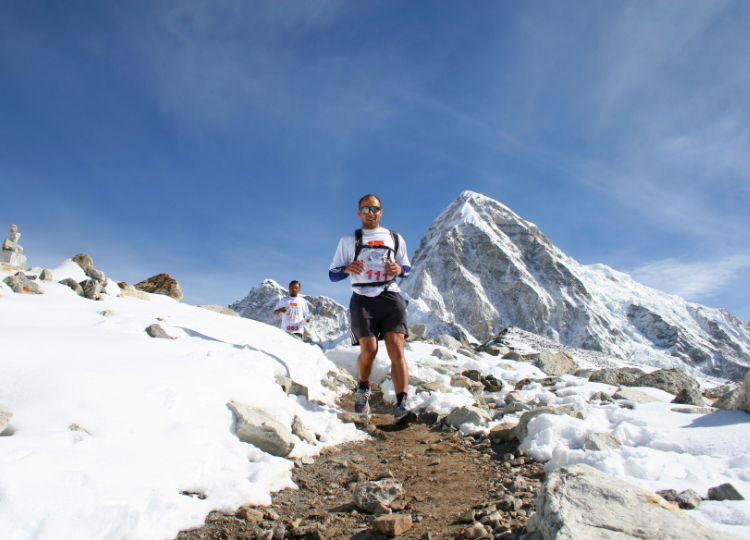
TIPS ON LIFE AT EVEREST BASE CAMP
For anyone adventuring to Everest Base Camp or exercising at high altitude, we’ve compiled some tips and advice with the help of KE Adventure and Mitch Hutchcraft, who recently summitted the world’s highest mountain.
Mitch completed an epic 240-day triathlon that saw him swim, bike, run (and latterly climb) from the shores of England to the summit of Everest.
Mitch’s top six tips for surviving – and making the most of – life at Everest Base Camp are:
1. Take plenty of personal snacks and home comforts. You will miss home.
2. Connection is very, very bad so make sure you have plenty of books and have pre-downloaded media to watch.
3. Be prepared to see and hear dozens of avalanches.
4. At night, sleep naked or only in underwear in your sleeping bag. If not, you will get cold! Wearing clothes leave you feeling freezing.
5. Treat the local people as you would want to be treated. They are incredible and will not forget it.
6. Only have your hot bucket shower during the hot part of the day and only wet your hair when you need to. Make sure to dry it fully, ASAP.
Follow Mitch on Instagram and check out his link in bio for fundraising details.
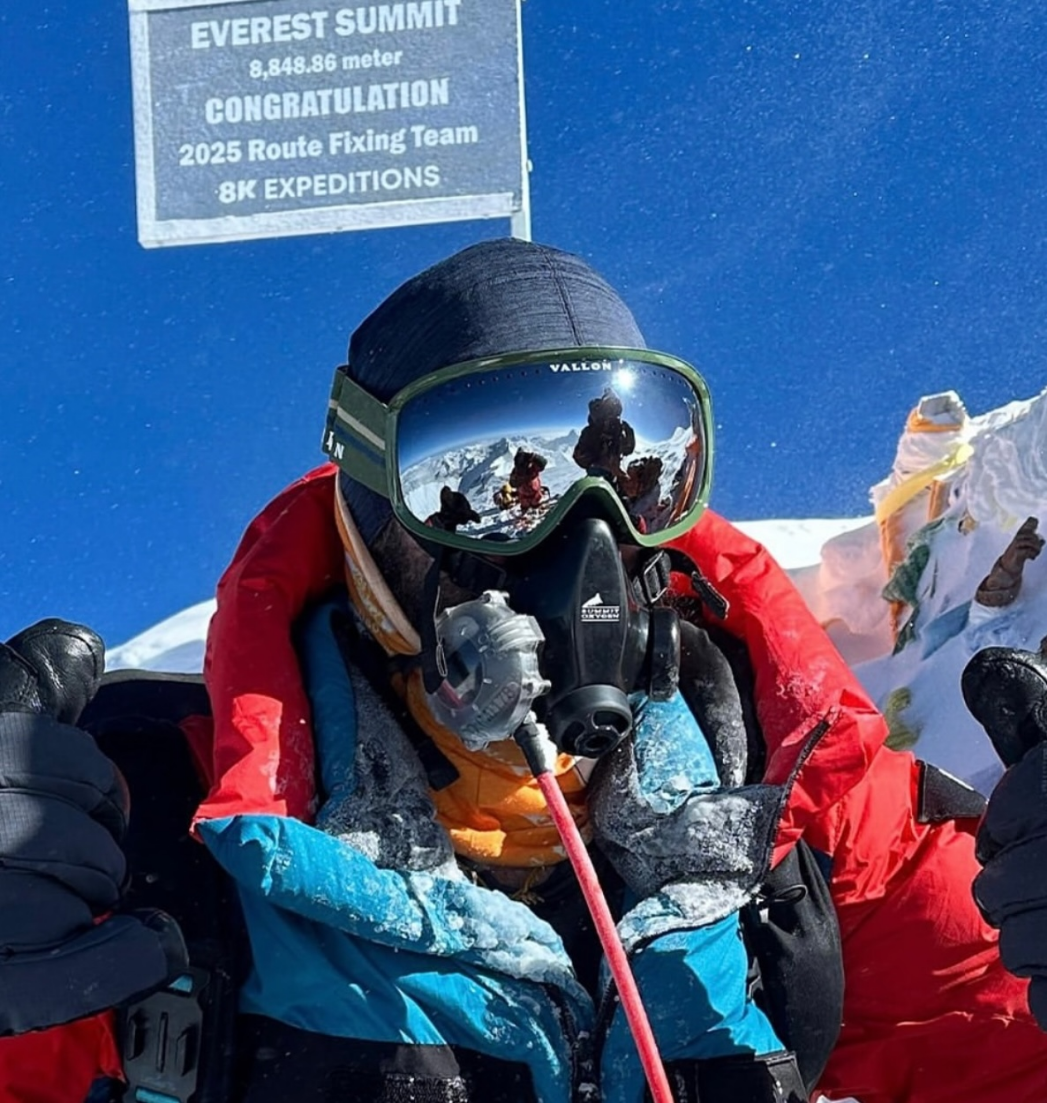
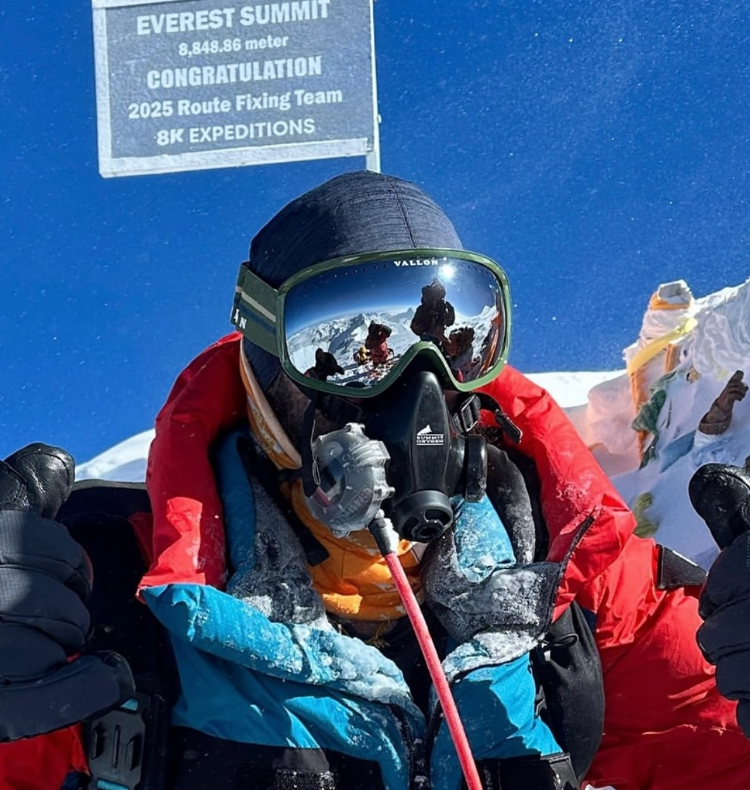
ADVICE ON MANAGING ALTITUDE SICKNESS
KE Adventure have been operating their Everest Marathon trip for several years. It involves 13 days of guided trekking up to Everest Base Camp, lots of acclimatisation, and then (for those who want to) the opportunity to take part in the world’s highest marathon.
Starting at 5,364m (Base Camp) and finishing at 3,446m (Namche Bazar), the marathon is run entirely at high altitude, where there is less oxygen to breathe. This can bring many challenges, including altitude sickness. KE Adventure provide the following advice:
“The best way to prevent altitude sickness is to follow a well-designed itinerary that doesn’t ascend too quickly and allows for adequate altitude acclimatisation. In addition to this you should ensure you do not overexert yourself.
“Trekking at a slow and steady pace and taking it easy when you arrive at your overnight camp will be beneficial. It is also important to keep well hydrated. With the exertion and dry air at altitude your body will lose more water than usual, so typically you need to be drinking an additional 1-1.5 litres a day at altitude.
“In most cases any symptoms (headache, loss of appetite, fatigue, shortness of breath, dizziness and trouble sleeping) of acute mountain sickness will disappear over time as your body acclimatises to the altitude. However, if symptoms persist then you will need to be assessed and stop ascending until they have improved or descend to a lower altitude. Usually, descent to a lower altitude will reverse the symptoms of altitude sickness.”
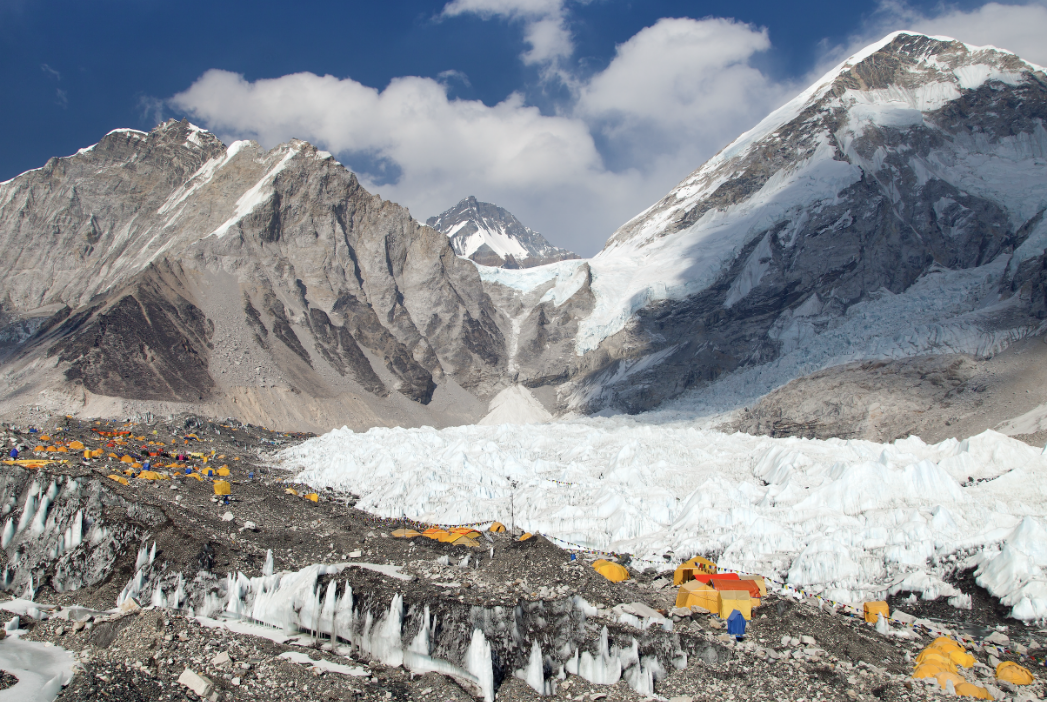
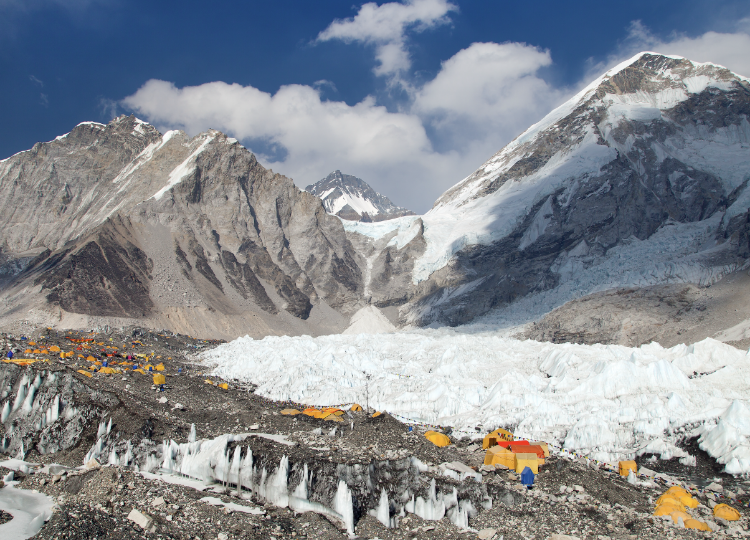
5 MORE TIPS FOR RUNNING AT HIGH ALTITUDE
- Understand that above 2,000 metres the oxygen is lower. Your body must work harder to deliver oxygen to muscles. Expect to feel short of breath and fatigued, especially in the first few days.
- Acclimatize slowly. Give your body time to adjust. Many experienced climbers use the philosophy of ‘climb high, sleep low.’
- Hydrate more, fuel up and slow your pace. Don’t worry too much about speed.
- If possible, do some training runs at progressively higher elevations. While at lower altitude, consider the use altitude tents or doing treadmill runs while wearing a simulated altitude mask.
- Respect the risks. Running or trekking at higher altitude is tough on the body and mind and poses more dangers than exercising at lower altitudes. Understand what you are committing to, research well and, where possible, surround yourself with people who have experience of higher altitudes.
